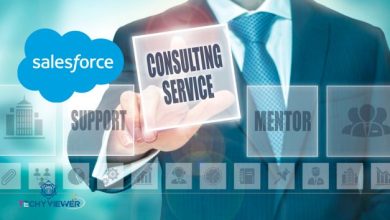How to Migrate from HubSpot to Salesforce CRM: A Step-by-Step Guide?
Though it is quite intimidating in itself to undertake the migration from HubSpot to Salesforce, it primarily helps one get better from all aspects in terms of customization, integration, and scalability possibilities. Salesforce is the strongest and most flexible CRM for different levels of business development compared to HubSpot.
In this blog, let’s take you through a step-by-step guide that will help you whenever you plan on migrating from HubSpot to Salesforce.
Why is Salesforce the Right Option
Salesforce is the global pioneer CRM solution that boasts of sophisticated tools, automation functions and unparalleled flexibility for customization. Whereas HubSpot is the most useful for businesses that serve businesses with limited complexity of requirements, Salesforce is perfect for organizations that seek more features. You see, Salesforce allows your company to adjust the workflows, connecting more applications, or using extra instruments like artificial intelligence or predictive analytics or, finally, additional reporting.
One more Salesforce strength is its openness to interface with other business frameworks like the ERP, marketing automation frameworks, and customer support platforms – making it a perfect decision for those prepared to develop. Moreover, AppExchange on Salesforce has thousands of apps that extend your CRM’s capabilities.
Top Effective Tips in Preparing for Data Migration from HubSpot to Salesforce
The first and perhaps the most important one is always planning. Here’s how you can set the stage for a successful transition:
Audit Your HubSpot Data: Check the gathered information in your HubSpot: contacts, leads, companies, deals, and custom properties. Working with both sets determine what records should be migrated and do a screening for irrelevant data that should not be moved.
Define Your Salesforce Structure: Know how your business functions will look in Salesforce. This involves declaration of the objects, fields and the record interdependence. Salesforce offers tremendous amounts of flexibility in terms of customization, which means that even if a company has a very general idea of the structure of its future Salesforce environment, it should establish a clear plan before migrating data.
Backup Data: You need to be certain that you are backed up of HubSpot data should any challenges come up as you migrate. Data integrity will always be sacrosanct to any business organization hence the need for backup as a form of risk management.
Plan for Integrations: Think about whether there are any current connections between HubSpot and third applications that you are already employing. To ensure that you do not have to start all the integrations from scratch, you will have to replicate or replace them in Salesforce.
Also Read: Leveraging Business Intelligence: 15 Key Highlights
An Operational Manual for Conversion of HubSpot Data into Salesforce
Various steps are followed to perform the migration from HubSpot to Salesforce like data transfer, post migration data verification etc. Below are the main steps involved:
Export Data from HubSpot: According to the information from HubSpot, you can export data from the application into the fields of the CSV format. It is advisable to start by syncing all the necessary information (for example, contacts, deals, tasks and others). This will act as a basis for importing information into the Salesforce to make the right business decisions.
Cleanse and Organize Data: Sometimes it is good to make an ad hoc clean up after exporting the data to attain the requirements that are accurate, complete and well formatted for the corporation’s Salesforce. This involves identification of duplicate records, normalizing an organization’s fields and mapping HubSpot properties to equivalent Salesforce properties.
Set Up Salesforce: There are several essentials to consider before you begin: Organization, structure and all elements within your Salesforce environment must conform to your business operations. Chapters 9–11: Fields, objects, and automation rules customization. If required, you need to create new fields as well as custom objects provided in the Salesforce according to the data structure.
Import Data to Salesforce: Data that is cleaned can be uploaded to Salesforce using Salesforce’s data import tools (Data Loader, the Data Import Wizard, etc.). At this step, make sure you compare HubSpot fields and Salesforce fields to avoid making some discrepancies between the two.
Test the Migration: After setting up you should check all data imported into Salesforce to make sure everything is functioning properly. Check if the data is safe from corruption and if the automation rules fire and if the reports are correct.
HubSpot vs. Salesforce: A Growth-Focused Comparison
Although HubSpot is considered a great CRM for businesses of small and medium sizes, Salesforce is created with more opportunities for scaling. Here’s a quick comparison to help you understand why Salesforce is the right option for growth:
Customization: Salesforce is very flexible and can have workflows, fields and objects customized to suit the business environment of an enterprise. HubSpot is less customizable, though it is versatile compared to other marketing software available on the market.
Scalability: Salesforce is developed to accommodate the more complicated needs of larger companies and steep sales volume and therefore well suited for companies that expect growth or have complex sales processes.
Integrations: Salesforce also provides a list of compatible third-party likely tools and applications and a huge list of integrations from AppExchange, whereas HubSpot has a narrow range of integrations.
Advanced Analytics: Reporting and Analytics of Salesforce are better and more powerful to provide insights regarding sales, customers, and organizational operations.
HubSpot to Salesforce: Step-by-Step
Migrating from HubSpot to Salesforce doesn’t need to be overwhelming if you follow a systematic process:
Step 1 – Analyze HubSpot Data: These may include the contacts, deals, activities, tasks, and the various fields, or custom properties in your Salesforce. Delete any bad or old or extraneous data.
Step 2 – Set Up Salesforce: You need to ensure that it reflects your business requirements so ensure you make necessary changes on Salesforce. This involves determination of the objects including the custom fields and the automation processes.
Step-3 – Data Export and Import: The data export from HubSpot is also done on Salesforce using the Data Import Wizard or Data Loader.
Step 4 – Integrations Setup: Change the integration with other systems such as marketing automation, email and ERP systems, etc.
Step 5 – User Training: To do so, make sure your team understands how to leverage Salesforce. This may cover the basics on how to report, create dashboards, and work around Salesforce’s environment.
Step 6 – Post-Migration Support: After the migration, the next steps should be to keep an eye on the data quality, speed, and, most importantly, usage rate. Job owners should continue to give their team support in order to adapt well to the change.
Also Read: Migrating Applications to Azure Overcoming Challenges and Leveraging Best Practices
Guided Self-Service
For those users who would rather perform all these transitions on their own, the following self-service tools are provided by Salesforce: Salesforce Trailhead – test it yourself As of now, there are free, guided, game-based modules that explain the basics of migrating data, hints on the customization approach, and useful tips on managing the Salesforce environment.
Custom Migration
There is often a need for a detailed plan when a business has more data or if the company is in a different industry or line of work. This is done at a granular level, such as entering into negotiations over data mapping and the type of custom fields or the type of process automation used. Custom migration allows for business specific adaptations to the platform while also guaranteeing that the sales force has been integrated seamlessly into daily operations.
What does a ‘personalized approach’ mean with relation to the migration process from HubSpot to Salesforce?
Personalized that the migration procedure is customized according to the mechanisms of the company, the structure of data and the objectives are set. Let’s not see it as data migration but more to align Salesforce to what we do best, how we do it effectively, and how we make informed decisions.
Personalization includes:
- Though the HubSpot fields and Salesforce fields might be nice as separate entities, when it comes to integration, you need to consider your business requirements
- A particularly important aspect that firms need to consider is how the forms created in automated workflows fit within their current business processes.
- It therefore involves training the users in the roles that are unique to their tasks and needs.
Also Read: What are the 6 Phases of Cloud Migration
Summing Up
This journey from HubSpot to Salesforce is a step up to enhancing your CRM and therefore your business. Fortunately, this transition can be efficient and problem-free, provided that adequate time is spent on planning, data preparation, and the choice of tools.
As implied by the options of guided self-service migration and customized solution offered by Salesforce, the latter has all the features to make your business grow further. Using this all-inclusive CRM migration guide, you will be able to maximize your capacity to meet clients’ needs effectively as well as improve your marketing, sales, and customer service approach to achieve a sustainable competitive advantage.
FAQ’s
What are the reasons I should consider avoiding HubSpot and moving to Salesforce?
Salesforce is very flexible, easily scalable and it can integrate with other systems, which can be helpful to business companies that may have complex selling cycles or that are planning to expand their size.
Now, HubSpot provides rather limited tools compared to Salesforce, however it is better suitable for small and midsize companies: it does not have automation or AI features, and also reporting is not as developed.
What are the important advantages of using Salesforce rather than HubSpot?
- Customization: Salesforce can be customized in a way whereby human business processes are aligned with systems business processes involving additional workflows, fields and objects.
- Scalability: A subsystem for supporting extensive, large-scale operations, as well as complicated sale transactions.
- Integration: Salesforce is compatible with ERP systems marketers and customer support platforms.
- Advanced Analytics: Thus, the increase in sophistication of decision making is based by the sales force being able to give detailed reports.
What considerations should I resolve before migrating data to Salesforce from HubSpot?
- Audit Your HubSpot Data: Run over your data one last time to ensure you are only transferring the data that is needed Transfer and reformat the data to the preferred format.
- Define Your Salesforce Structure: Build and design Salesforce objects, fields and workflow according to your business requirement.
- Backup Data: The migration process is sensitive, and you cannot afford to lose your HubSpot data; thus, make a backup.
- Plan Integrations: Find out which third-party apps are going to relate to Salesforce.
How can one transfer data from HubSpot into Salesforce?
- Analyze HubSpot Data: Before data migration it is important to audit and clean the data.
- Set Up Salesforce: Change fields, objects and create new business processes and automation processes.
- Export and Import Data: Salesforce has Data Import Wizard or Data Loader to help in the process.
- Integrate Other Systems: From this perspective, IT should reconfigure existing integrations with marketing automation, emails, and ERP.
- Train Users: Make certain that those on your team know what the various features and functions of Salesforce are.
- Provide Post-Migration Support: Maintain tabs with the kind and quality of data received and be in touch with users for their continued support.
How can I prospect when migrating data from HubSpot to Salesforce?
- Salesforce Data Import Wizard for basic upload and download of data.
- Salesforce Data Loader for larger data sets.
- Third-party migration tools if at all needed for complicated migration procedures.
- Salesforce Trailhead as a solution guided for end-users self-learning tutorials.
But how do I get to make sure that it is usable and accurate after migrating it?
- Data Cleansing: Before data migration, ensure and filter out duplicate as well as unwanted records.
- Field Mapping: When mapping HubSpot properties with Salesforce fields, it should be done properly.
- Testing: By certifying migrated data, and reviewing automation rules and reports, the suitability of such data can be confirmed.
In other words, what kind of integrations can Salesforce help with that HubSpot can’t?
The salesforce platform works well with other business applications and tools from other third parties such as ERP systems, advanced analytics, applications and tools from the salesforce app exchange among others. These integrations add a lot more functionality to Salesforce than HubSpot offers.
Comparing the CSP migration and guided self-service CSP migration to the custom migration, what is the difference?
- Guided Self-Service Migration: This option is appropriate for the users who want to handle change management on their own though using lotion like Salesforce Trailhead.
- Custom Migration: This involves customization of the migration process in terms of complexity, level of details, workflow requirements and compliance to business needs and requirements of the business.
The training is important after migrating to Salesforce due to the following reasons.
Training makes sure that your team knows how to use the sales force effectively, how to create reports and how to work according to the features of the software. It goes without saying that efficient training results in enhanced user satisfaction as well as making your team capable of getting most of the system.
What do I need to keep an eye on after I have finished migrating?
- Data Quality: Search for similar ideas or missing or incorrectly formatted fields.
- System Performance: Check if Salesforce is fine and different integrations are working well.
- User Adoption: See how your team is accepting Salesforce.
- Automation Rules: Having gone through the definitions make sure that the workflows, triggers are firing as expected.
How does the use of Salesforce contribute more to business growth than that of HubSpot?
Salesforce is designed to handle large scale and large operations, hence appropriate for any organization that has expansion strategies. It has features such as artificial intelligence, forecasting, and tailored connections averting the complexity of controlling processes in large businesses.
Would it be possible to do the migration independently, or will the services of a specialist be required?
If your migration is basic, then consider the following resources as self-service guided: They offer guided Self-service such as Salesforce Trailhead. If moving more data or data in complex structures or using company- specific processes, it is advisable to get professional help or prepare a professional custom migration plan.
For how long does it take when migrating from one CRM to another, in this case, from HubSpot to Salesforce?
The timeline focused on in this paper will depend on the nature of data involved and the extent of customization required. Small transfers may last for several days while complex ones may even span several weeks or even months.
What difficulties can I experience if any other person is performing migration, and how can I overcome them?
- Data Discrepancies: It is also necessary to clean and map data before they are moved from their current locations to increase compatibility.
- Integration Issues: Always plan integration in advance and where necessary should be tested so that you are sure that it will offer the intended services effectively.
- User Resistance: It is, therefore, crucial to offer extensive training and as well as sustained support to the integrating professionals.
Should small businesses adopt Salesforce or is it a cost that is too expensive to incur?
However, even in this case, Salesforce can sometimes look like an all-encompassing tool that is needed for any business when in fact, it might be too much for some small businesses. But, if your business is evolving and needs sophisticated tools, more options for configurations and users, then investing in Salesforce is beneficial.



